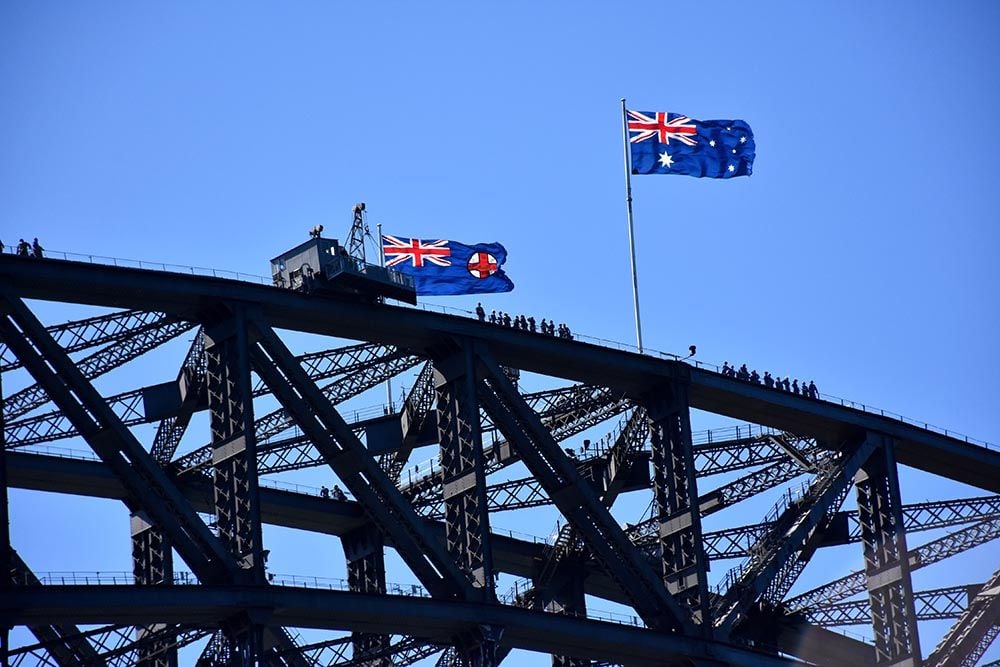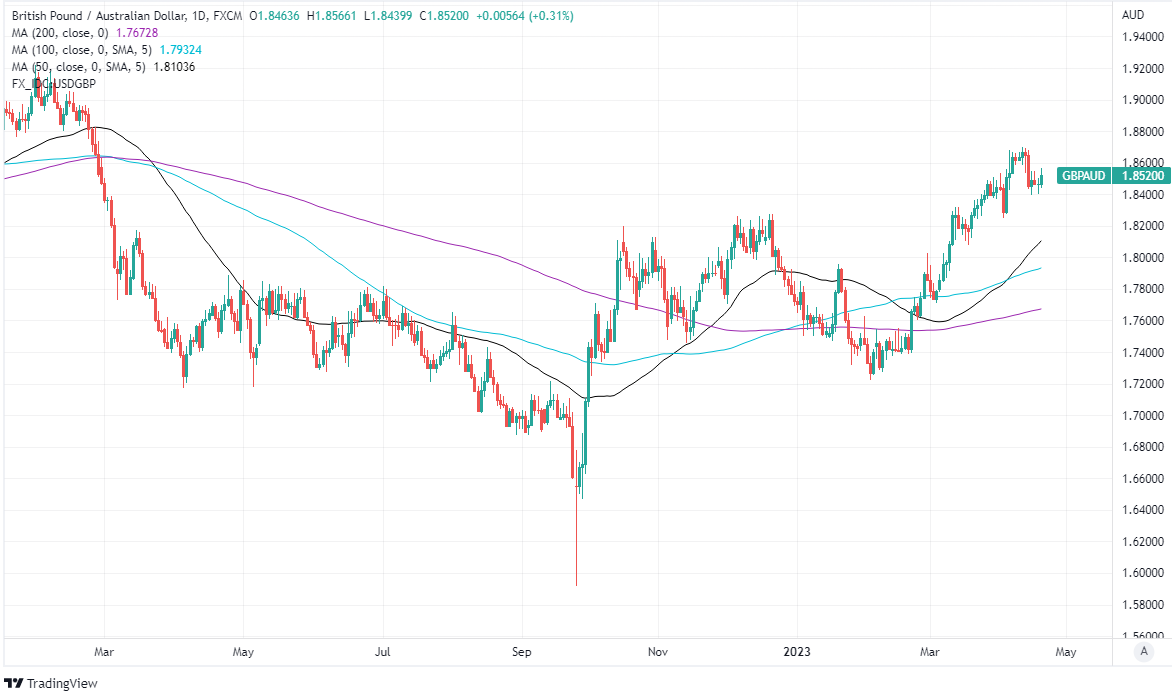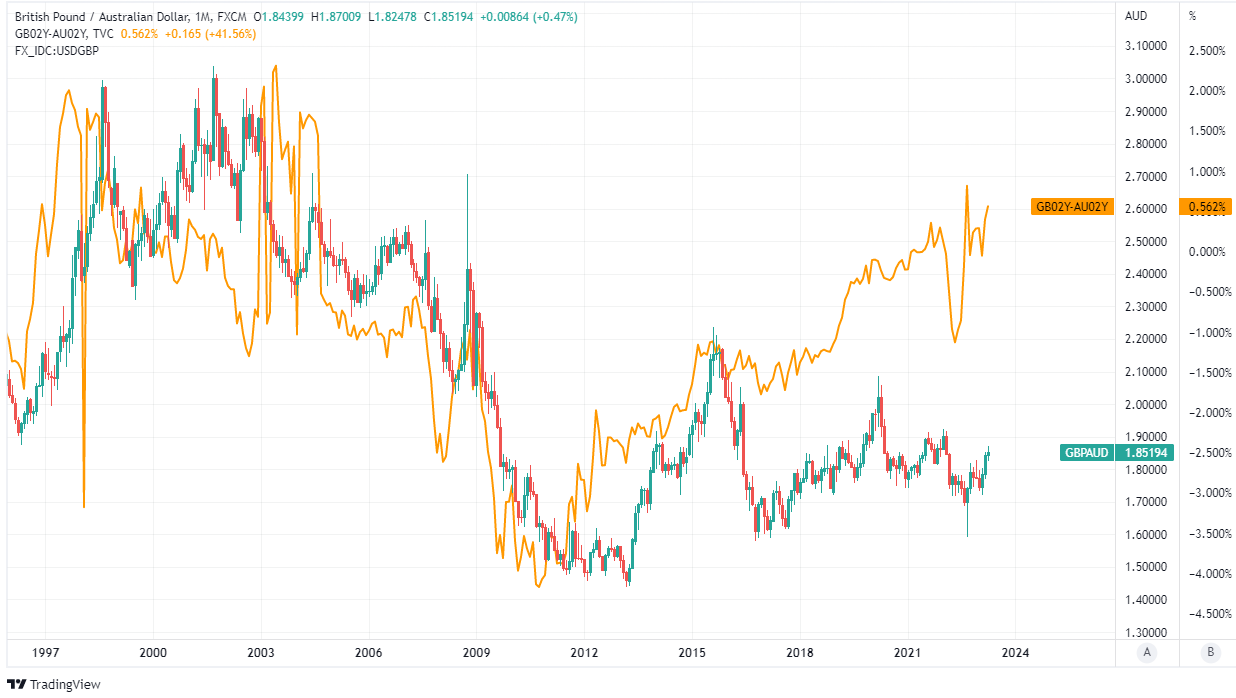GBP/AUD Rate Tipped Higher as Yield Differential Seen Wider
- Written by: James Skinner
-
"The diverging outlook between the Reserve Bank of Australia and the BoE can push GBP/AUD above 1.8868 in coming months" CBA.

Image © RBA.
The Pound to Australian Dollar exchange rate is already one of the better performing Sterling pairs of the year but could rise further and potentially above 1.89 in the weeks or months ahead as the bilateral bond yield differential heads for levels rarely seen since the turn of the millennium.
Sterling came close to the top of the G20 league table on Wednesday when only the U.S. Dollar, Russian Rouble and Turkish Lira rose more broadly after Office for National Statistics figures warned of trouble ahead for the Bank of England (BoE) and UK economy.
"These are the kind of surprises BoE policy makers had previously hinted could justify additional tightening. As the case for another 25bps hike in May has been cemented this week, we adjust our view accordingly," says Christopher Graham, an economist at Standard Chartered.
This is after UK inflation held in the double digits while remaining unchanged at 6.2% once energy, food and regulated prices are overlooked in a March outcome that suggests the BoE's most recent forecasts may have been too optimistic.
 Above: Pound to Australian Dollar rate shown at daily intervals with selected moving averages.
Above: Pound to Australian Dollar rate shown at daily intervals with selected moving averages.
Wednesday's data followed other figures out on Tuesday suggesting that average wage and salary growth had persisted in February at some of its strongest levels for decades in what could be taken by the BoE as a sign of inflation risk.
"The combination of these high inflation prints, alongside yesterday’s employment data (which showed continued wage strength) points to a 0.25% hike at the next BoE meeting," says Joe Tuckey, head of FX analysis at Argentex.
The bank said in March that inflation would fall from 10.4% to around 4% by year-end and that price growth would decelerate rapidly in the second quarter but this week's data has potentially thrown a spanner into those works.
"This puts it at odds with most peers, with modest disinflation – at least in terms of the headline rate – in places like the US and Europe. Core inflation remains a lot stickier everywhere and the UK is no exception," says Neil Wilson, chief market analyst at Finalto Trading.
BoE inflation forecasts were based on Bank Rate remaining unchanged at 4.25% throughout the year but this week's data has seen market-implied expectations for borrowing costs rising to reflect a high risk of as many as three further increases in the benchmark for borrowing costs.
"We expect the BoE to increase the bank rate once more by 25bp next month to 4.5%. However, markets are rightly pricing the risk of an additional 25bp increase," says Joseph Capurso, head of international economics at Commonwealth Bank of Australia.
 Above: Pound to Australian Dollar rate shown at monthly intervals with spread or gap between 02-year UK and Australian government bond yields. Click image for closer inspection.
Above: Pound to Australian Dollar rate shown at monthly intervals with spread or gap between 02-year UK and Australian government bond yields. Click image for closer inspection.
"The diverging outlook between the Reserve Bank of Australia and the BoE can push GBP/AUD above 1.8868 in coming months in our view," Capurso adds.
The differential between UK and Australian government bond yields has already risen above zero and to its highest level since 2004 in recent months but would widen further with additional increases of Bank Rate in what would be a potentially positive influence on GBP/AUD.
A wider yield differential and higher GBP/AUD might be more likely if the Reserve Bank of Australia (RBA) retains a cautious and measured approach to bringing Australian inflation back to within the 2% to 3% target range.
The RBA has prioritised keeping the economy on an even keel and preserving the recent growth of the labour market as it seeks to bring Australian inflation back down to the target level, leading the bank to pause its interest rate cycle in April after lifting its cash rate 10 times to 3.6% over the prior year.
"Members judged that monetary policy was already restrictive," minutes of the RBA's April meeting suggested on Tuesday. "Members assessed the value of pausing at this meeting to gather more information on the economic outlook."











